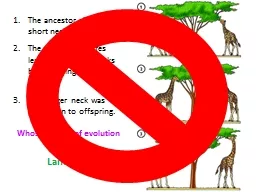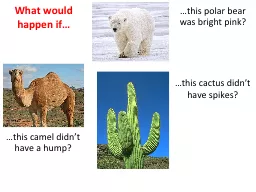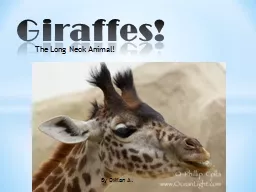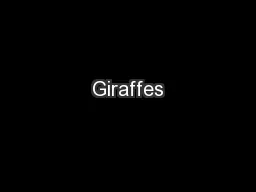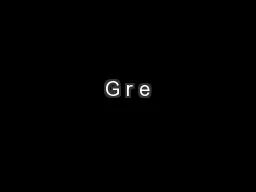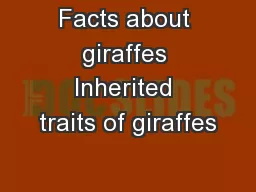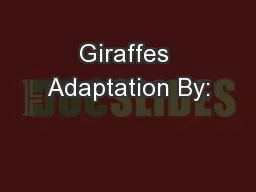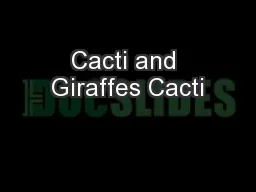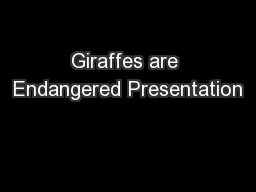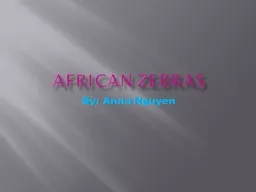PPT-The ancestor giraffes had short necks.
Author : tatiana-dople | Published Date : 2017-10-20
The ancestor giraffes lengthened their necks by stretching to reach leaves The longer neck was passed on to offspring Whose theory of evolution is this Lamarcks
Presentation Embed Code
Download Presentation
Download Presentation The PPT/PDF document "The ancestor giraffes had short necks." is the property of its rightful owner. Permission is granted to download and print the materials on this website for personal, non-commercial use only, and to display it on your personal computer provided you do not modify the materials and that you retain all copyright notices contained in the materials. By downloading content from our website, you accept the terms of this agreement.
The ancestor giraffes had short necks.: Transcript
Download Rules Of Document
"The ancestor giraffes had short necks."The content belongs to its owner. You may download and print it for personal use, without modification, and keep all copyright notices. By downloading, you agree to these terms.
Related Documents

